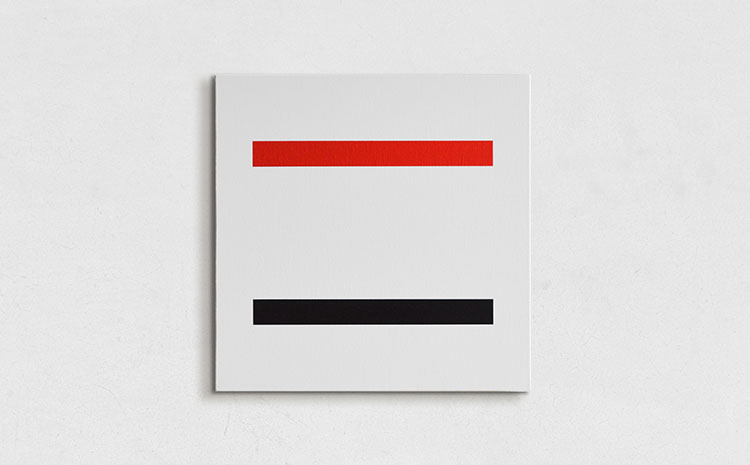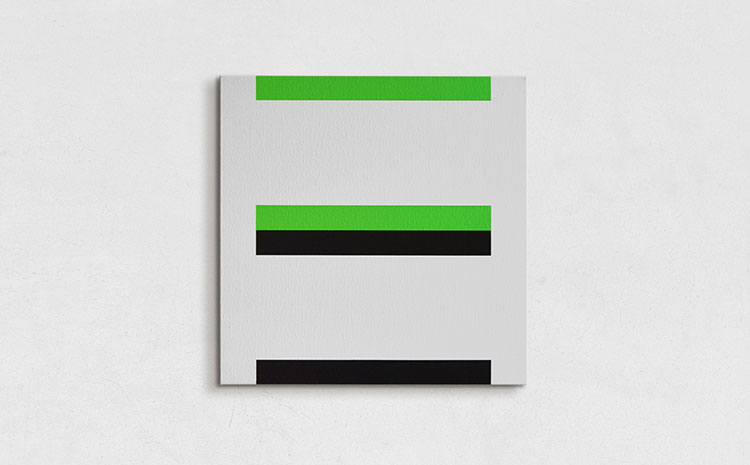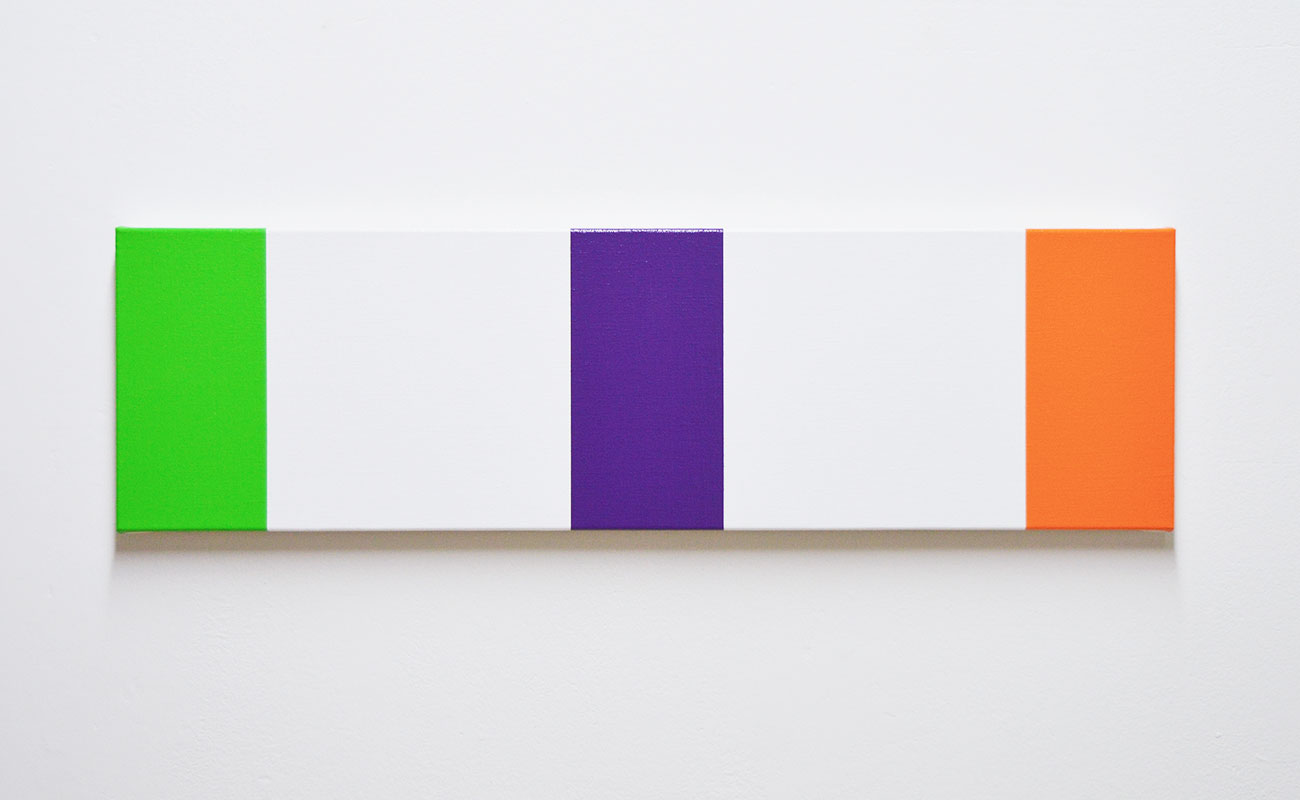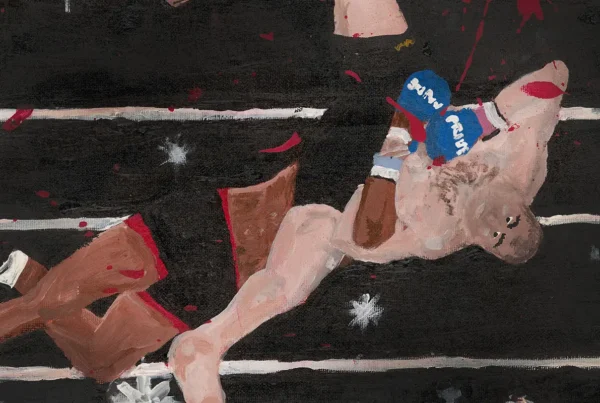The government started to enforce the idea that art has to have a clear function in the political system, that can only be measured by its economic value. An extremely poor policy that refuses to see the long term qualities of art, crafts and culture. Qualities that are very much needed for having a healthy society.
The Impact of Government Policy on the Art Scene in Amsterdam
Ruud de Kort is Dutch and based in Amsterdam. He studied arts at the academy of arts in Maastricht, Konstfack in Stockholm, and De Ateliers in Amsterdam. He is trained as a sculptor but has slowly transitioned to painting.
Ruud has been based in Amsterdam since the mid-1990s. He came to the city for its cultural climate at that time, which was marked by a strong presence of artists who organized many events and exhibitions. There was also a significant alternative scene and a squat movement that advocated for affordable work and living spaces. Ruud was actively involved in the squat scene and in 1999, he participated in the squating of a building that he still works in today. The building, an old school that the council had planned to demolish, now houses about 16 individual studios, a gallery, an art residency, a vegan restaurant, a cinema, and a club.
Approximately 15 years ago, a right-wing government was elected in the Netherlands. The political policy on culture became one of breakdown and destruction, with the government pushing the idea that art must have a clear function in the political system, which can only be measured by its economic value. This policy, which fails to recognize the long-term qualities of art, crafts, and culture, is extremely poor and fails to consider the importance of these qualities for a healthy society.

Political and Financial Challenges Shape Ruud de Kort’s Artistic Vision
The Dutch artist experienced significant financial cuts which led to the cessation of many initiatives and the alteration of museum visions. Many Amsterdam-based artists, including Ruud, were forced to leave as their studio buildings were converted into lucrative apartment buildings. Ruud lamented working in a populist political climate that lacks vision and desires a more supportive political climate where great things can once again emerge. These events have had an impact on Ruud’s work, causing him to resist the notion that art should serve economic or political agendas and instead focus on demonstrating the autonomy of art in his artwork.
Ruud de Kort makes paintings and works on paper. His work has an abstract, minimalistic appearance and often consists of monochrome colored bars or surfaces. Ruud has heard Dutch painter Robbert Zandvliet say that it is not important what one paints, as long as they know why they are painting it. This way, the work can be imbued with the energy it needs. Although Ruud’s work has politically engaged roots, this is no longer clearly visible and is not a goal. Ultimately, the works are about art itself. Ruud likes to explore how far he can reduce a thought or image to its essence while still communicating effectively. He enjoys it when the viewer must put effort into understanding the communication and when the work is more complex than it appears on the surface. Eventually, the work can provide multiple levels of information or angles on reality and potentially lead to inner reflection.

Technical Purity and Minimalist Approach in Ruud de Kort’s Art
Ruud’s work is characterized by a desire for neutrality and balance. This emotion drives a pursuit of technical purity and simplicity through an abstract, minimalist approach. No anecdotes or ornamentation are included, only formal reduction to reach the essence.
Each color is applied in thin layers until the right contrast between gloss and matte finish is achieved. This technique transforms the artwork into an object. The pure and clean process of painting and perception allows for deep concentration and reflection.
It is important to Ruud de Kort that the work can counter sentiments present in today’s society and function as a mirror. When the work is able to do this, it is considered finished.
The painter likes artists Donald Judd, Bob Bonies, Elsworth Kelly, and Alan Uglow. Judd and Bonies are appreciated for their concepts and bold approach, while Uglow is admired for his aesthetics. Ruud finds it inspiring to know that he is facing similar artistic and practical difficulties as other artists who have dedicated themselves to making art, as he believes that making art is not easy and requires a lot of effort.

The Technical Aspect of Ruud de Kort’s Approach to Creating Meaningful Work
Ruud finds the technical aspect of a work to be very important. He believes that the level of concentration and dedication put into a work can be seen in the details, and that this can make the difference between a work being true and real or just a canvas with paint on it. Previously, Ruud’s works were 3D installation pieces, such as a room filled with high gloss green car tires. He used to make paintings with texts, which is where the monochrome bars he paints now originated from, starting as abstract lines of text. Ruud’s attitude towards his work has changed and he is now stricter with himself, not allowing himself to be sloppy and get carried away by things that do not take him in the direction he needs to be heading. This requires a lot of concentration and focus, but Ruud believes that it is necessary to produce good art, even if it means going against the flow.
Ruud de Kort is happy with the ANTIFA series from 2020. He appreciates the simplicity and formal boldness of the compositions, as well as the ratio and motivation behind the compositions. Despite using a monk-like technique to paint the monochrome bars and trying to get them perfect without any visible brushstrokes, de Kort believes that the social and political titles of the works give them the right twist. De Kort believes that the different layers of the pieces come together well and allow the work to communicate its own message, rather than his own.
The artist is currently working on the idea to realize murals and hopes that it will start soon. He has also started working on 3 dimensional objects, such as wood and aluminium. He hopes that this will result in bigger sculptural works, but before realization, it still requires more work.






